SEAT Leon vs VW Tiguan - Differences and prices compared
Costs and Efficiency:
Price and efficiency are often the first things buyers look at. Here it becomes clear which model has the long-term edge – whether at the pump, the plug, or in purchase price.
SEAT Leon has a distinct advantage in terms of price – it starts at 24500 £, while the VW Tiguan costs 32800 £. That’s a price difference of around 8331 £.
Fuel consumption also shows a difference: SEAT Leon manages with 1.20 L and is therefore a bit more efficient than the VW Tiguan with 1.40 L. The difference is about 0.20 L per 100 km.
As for range, the SEAT Leon performs hardly perceptible better – achieving up to 133 km, about 7 km more than the VW Tiguan.
Engine and Performance:
Power, torque and acceleration are the classic benchmarks for car enthusiasts – and here, some clear differences start to show.
When it comes to engine power, the has a edge – offering compared to . That’s roughly more horsepower.
In acceleration from 0 to 100 km/h, the VW Tiguan is evident quicker – completing the sprint in 5.90 s, while the SEAT Leon takes 7.70 s. That’s about 1.80 s faster.
In terms of top speed, the VW Tiguan performs slight better – reaching 242 km/h, while the SEAT Leon tops out at 220 km/h. The difference is around 22 km/h.
There’s also a difference in torque: VW Tiguan pulls barely noticeable stronger with 400 Nm compared to 360 Nm. That’s about 40 Nm difference.
Space and Everyday Use:
Beyond pure performance, interior space and usability matter most in daily life. This is where you see which car is more practical and versatile.
Seats: offers more seating capacity – vs .
In curb weight, SEAT Leon is to a small extent lighter – 1344 kg compared to 1599 kg. The difference is around 255 kg.
In terms of boot space, the VW Tiguan offers decisively more room – 652 L compared to 380 L. That’s a difference of about 272 L.
In maximum load capacity, the VW Tiguan performs noticeable better – up to 1650 L, which is about 349 L more than the SEAT Leon.
When it comes to payload, VW Tiguan hardly perceptible takes the win – 533 kg compared to 521 kg. That’s a difference of about 12 kg.
Who comes out on top?
Overall, the VW Tiguan shows itself to be secures victory with a clear margin and secures the title of DriveDuel Champion.
It convinces with the more balanced overall package and proves to be the more versatile choice for everyday use.
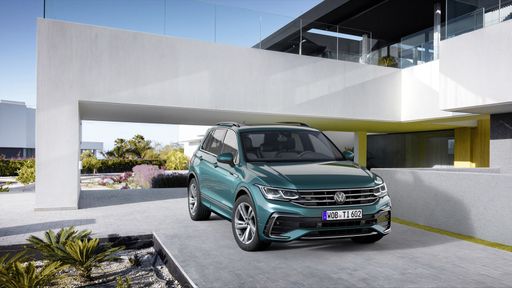 @ Volkswagen AG / VW Media
@ Volkswagen AG / VW Media
VW Tiguan
Costs and Consumption
View detailed analysis
Engine and Performance
View detailed analysis
Dimensions and Body
View detailed analysis
SEAT Leon
SEAT Leon pairs sharp, modern styling with a cabin that's sensible and slightly sporty, making it an appealing choice for buyers who want flair without fuss. It drives with eager composure and offers a neat balance of comfort and agility, so you get everyday usability with a wink of fun.
details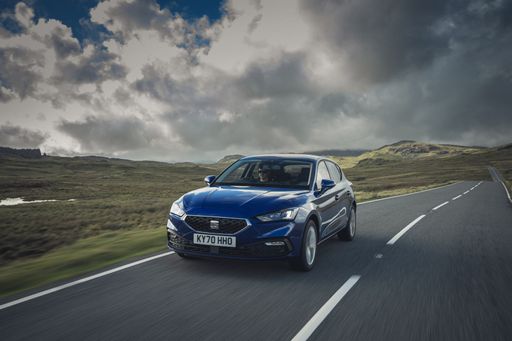 @ SEAT S.A. / SEAT Media Center
@ SEAT S.A. / SEAT Media Center
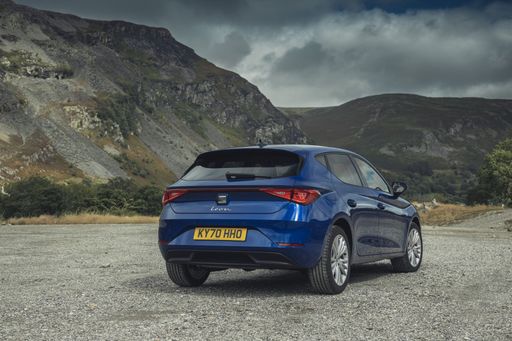 @ SEAT S.A. / SEAT Media Center
@ SEAT S.A. / SEAT Media Center
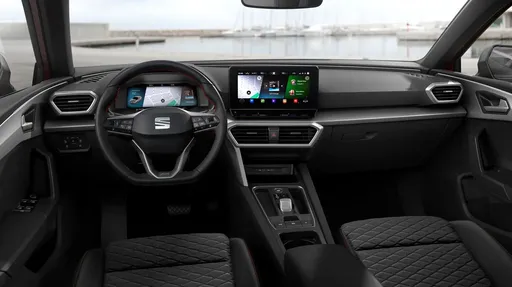 @ SEAT S.A. / SEAT Media Center
@ SEAT S.A. / SEAT Media Center
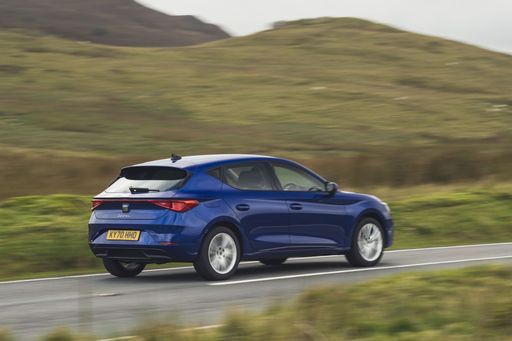 @ SEAT S.A. / SEAT Media Center
@ SEAT S.A. / SEAT Media Center
VW Tiguan
The VW Tiguan blends sensible family practicality with a dash of German polish, delivering a calm, reassuring ride and a cabin that never feels like an afterthought. For buyers who want an SUV that’s easy to live with yet still nicely dressed, the Tiguan is the grown‑up choice that keeps a cheeky wink in reserve.
details @ Volkswagen AG / VW Media
@ Volkswagen AG / VW Media
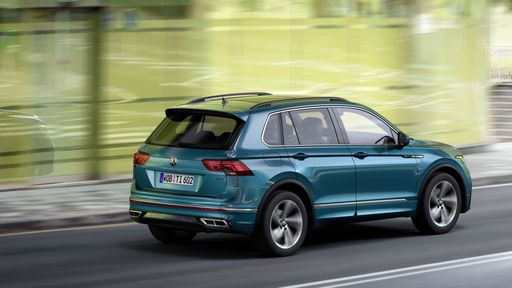 @ Volkswagen AG / VW Media
@ Volkswagen AG / VW Media
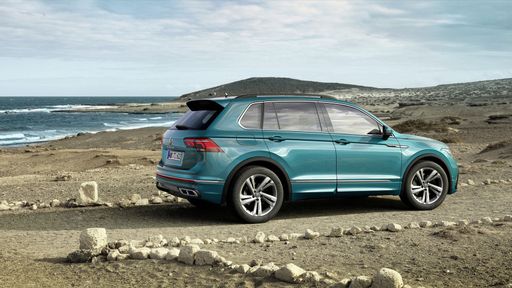 @ Volkswagen AG / VW Media
@ Volkswagen AG / VW Media
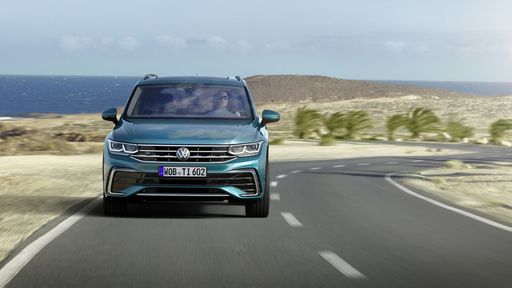 @ Volkswagen AG / VW Media
@ Volkswagen AG / VW Media
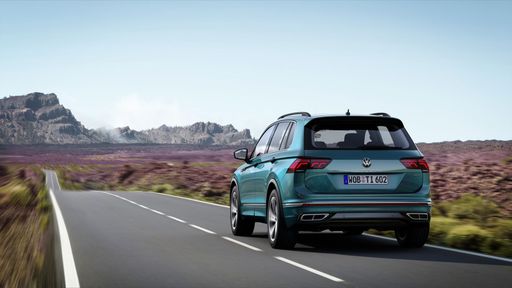 @ Volkswagen AG / VW Media
@ Volkswagen AG / VW Media
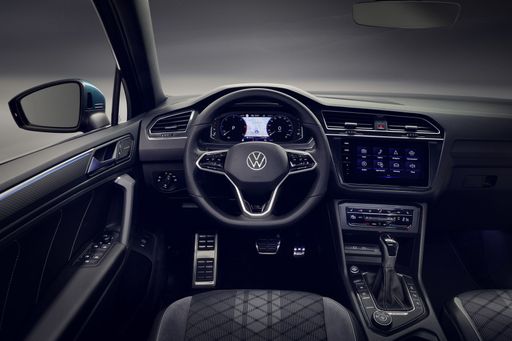 @ Volkswagen AG / VW Media
@ Volkswagen AG / VW Media
 @ SEAT S.A. / SEAT Media Center
@ SEAT S.A. / SEAT Media Center
|
 @ Volkswagen AG / VW Media
@ Volkswagen AG / VW Media
|
|
|
|
Costs and Consumption |
|
|---|---|
|
Price
24500 - 36400 £
|
Price
32800 - 51900 £
|
|
Consumption L/100km
1.2 - 5.5 L
|
Consumption L/100km
1.4 - 8.4 L
|
|
Consumption kWh/100km
-
|
Consumption kWh/100km
-
|
|
Electric Range
133 km
|
Electric Range
118 - 126 km
|
|
Battery Capacity
19.70 kWh
|
Battery Capacity
19.70 kWh
|
|
co2
27 - 126 g/km
|
co2
32 - 190 g/km
|
|
Fuel tank capacity
40 - 45 L
|
Fuel tank capacity
45 - 58 L
|
Dimensions and Body |
|
|---|---|
|
Body Type
Hatchback
|
Body Type
SUV
|
|
Seats
5
|
Seats
5
|
|
Doors
5
|
Doors
5
|
|
Curb weight
1344 - 1657 kg
|
Curb weight
1599 - 1890 kg
|
|
Trunk capacity
270 - 380 L
|
Trunk capacity
490 - 652 L
|
|
Length
4368 mm
|
Length
4539 mm
|
|
Width
1799 mm
|
Width
1842 - 1859 mm
|
|
Height
1442 - 1460 mm
|
Height
1656 - 1658 mm
|
|
Max trunk capacity
1187 - 1301 L
|
Max trunk capacity
1486 - 1650 L
|
|
Payload
473 - 521 kg
|
Payload
460 - 533 kg
|
Engine and Performance |
|
|---|---|
|
Engine Type
Petrol, Petrol MHEV, Diesel, Plugin Hybrid
|
Engine Type
Petrol, Petrol MHEV, Diesel, Plugin Hybrid
|
|
Transmission
Manuel, Automatic
|
Transmission
Automatic
|
|
Transmission Detail
Manual Gearbox, Dual-Clutch Automatic
|
Transmission Detail
Dual-Clutch Automatic
|
|
Drive Type
Front-Wheel Drive
|
Drive Type
All-Wheel Drive, Front-Wheel Drive
|
|
Power HP
116 - 272 HP
|
Power HP
130 - 272 HP
|
|
Acceleration 0-100km/h
7.7 - 10.5 s
|
Acceleration 0-100km/h
5.9 - 10.6 s
|
|
Max Speed
197 - 220 km/h
|
Max Speed
198 - 242 km/h
|
|
Torque
220 - 360 Nm
|
Torque
220 - 400 Nm
|
|
Number of Cylinders
4
|
Number of Cylinders
4
|
|
Power kW
85 - 200 kW
|
Power kW
96 - 200 kW
|
|
Engine capacity
1498 - 1968 cm3
|
Engine capacity
1498 - 1984 cm3
|
General |
|
|---|---|
|
Model Year
2024 - 2025
|
Model Year
2024 - 2025
|
|
CO2 Efficiency Class
D, B
|
CO2 Efficiency Class
G, D, E, F, B
|
|
Brand
SEAT
|
Brand
VW
|
What drive types are available for the SEAT Leon?
The SEAT Leon is available as Front-Wheel Drive.
The prices and data displayed are estimates based on German list prices and may vary by country. This information is not legally binding.
